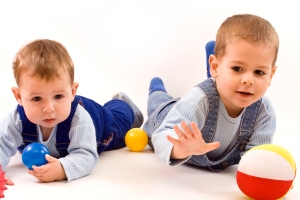 Toys that contain certain toxins such as PVC (phthalates), BPA, and DINP pose hazards to our children. Some effects could be apparent immediately and others will not be apparent for years to come. Here are some of the potential hazards that come from being exposed to these toxins that are found in unregulated children’s toys.
Toys that contain certain toxins such as PVC (phthalates), BPA, and DINP pose hazards to our children. Some effects could be apparent immediately and others will not be apparent for years to come. Here are some of the potential hazards that come from being exposed to these toxins that are found in unregulated children’s toys.
- BPA (Bisphenol A) is a plastic hardener and is used in all kinds of bottles, CD discs, infant sippy cups and the hardened plastic around pacifiers but not the teat. It is still under investigation for the exact hazards it causes because there is no linked evidence of its effects on people, but studies based on animals, show there is “some concern” about the potential effects of BPA on the brain, behaviour, and prostate gland in fetuses, infants, and young children.
- DINP (Diisononyl phthalate) has been linked to possible health problems arising in later life from children’s repeated handling and chewing of toys containing DINP – Such as blood, kidney, and liver issues. Disononyl pthalate has also been linked to fertility/developmental-related effects.
- There are different kinds of phthalates, three that have been named the most potent. Diethylhexyl phthalate (DEHP), Dibutyl phthalate (DBP) and Butylbenzyl phthalate (BBP). These and other phthalates can be found in toys made from soft plastic or with a soft plastic component such as bath toys, baby gyms, soft books, PVC squeeze toys, inflatable toys and many more…
Do you know what’s in your children’s toys?
Play it safe – Buy Organic
Joanne@Kimbee

